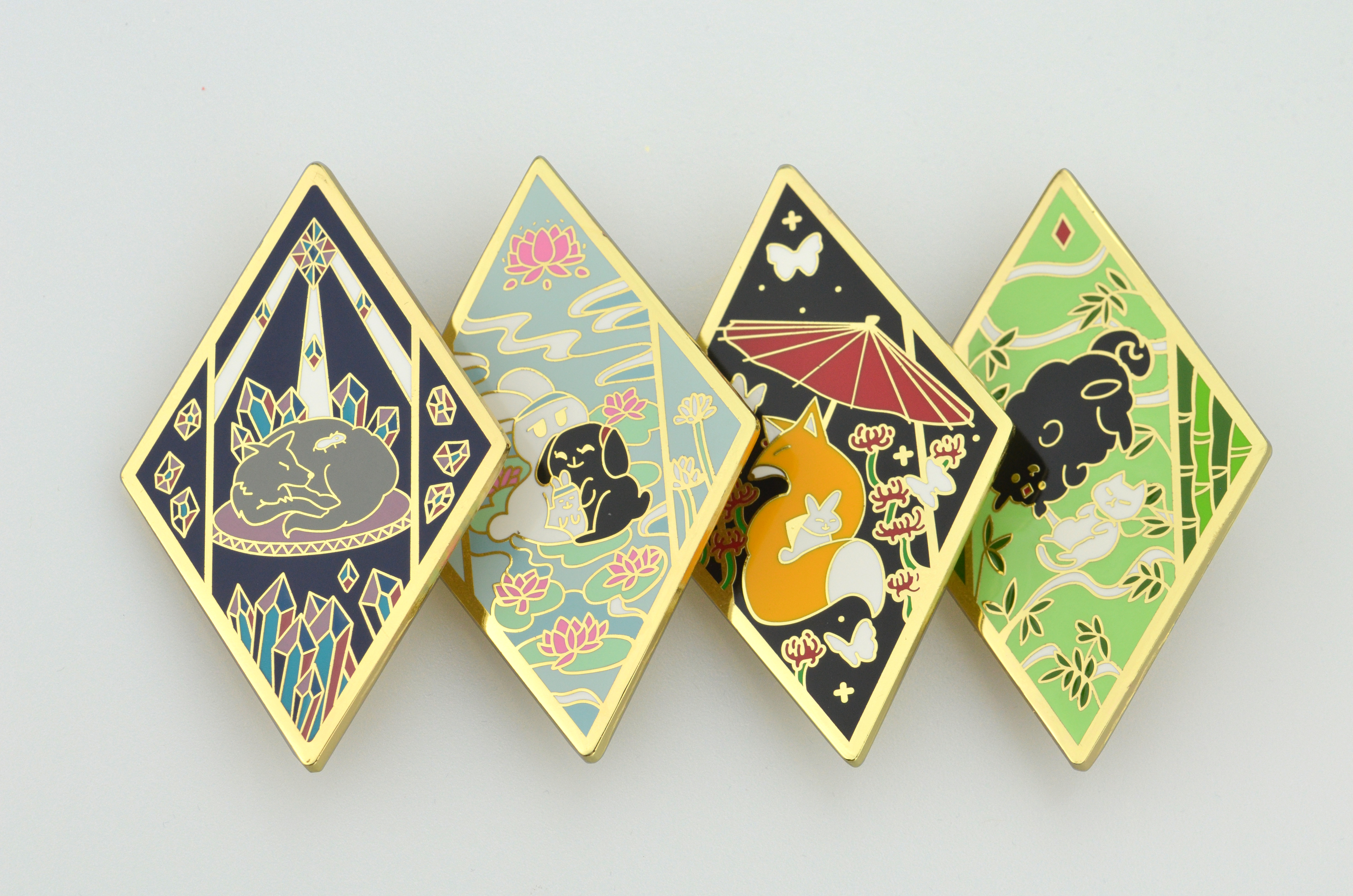1. Hard Enamel badge. Namely, the insignia made by enamel color insertion is the most high-end color insertion process, which is commonly used to make military and state organ badges, badges, commemorative coins, medals, etc. that are especially commemorative and should be preserved for a long time
2. Hard Enamel badges are mainly made of red copper, colored with enamel ore powder, and burned at a high temperature above 850 ℃.
3. Hard Enamel badges have the following characteristics:
① The color is almost flush with the metal line
② Enamel powder, dark color, never fade
③ It is hard and brittle, and sharp objects cannot be stabbed
④ High temperature resistance, it needs to be burned into color at a temperature above 850 ℃
⑤ If the raw materials are thin, high temperature will make the product have radian/curvature (not bending effect)
⑥ The back is not a bright plane, and there will be irregular pits. This is due to the high temperature ablation of impurities in red copper
4. Hard Enamel badge production process: Drawing I – Plate printing – Die biting – Die engraving – Die cutting – Stamping – Coloring – High temperature firing – Grinding stone – Repair – Polishing – Welding accessories – Electroplating – Quality inspection – Packaging
5. Advantages of enamel badge. The color can be preserved for a hundred years; The color is fixed and there is no color difference.
6. The difference between his enamel badge and the paint badge:
The difference between enamel badges and baked enamel badges: because it is to burn one color at a high temperature before burning another color, and all colors go through the stone grinding process after being burned, the colored part of the enamel badge is almost on the same plane with the surrounding metal lines, unlike the baked enamel badge, which has a distinct concave and convex feeling, which is also the main method to distinguish the imitation enamel badge from the baked enamel badge.
Welcome to customize your unique badge if you need handicrafts and gifts
Post time: Dec-12-2022






